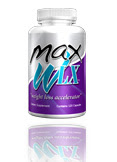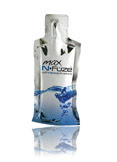The primary material for water pipes in major U.S. cities, between the late 19th and early 20th centuries, was lead. Its durability and malleability made it a very popular choice for pipe material. Eventually galvanized steel and copper would replace lead, and copper pipe would eventually become the most popular material used in home water service and distribution in mid to late 20th century construction.
Lead contamination was the top source of lead-related health issues before the hazards of ingesting it were known. The cause was pipe corrosion and erosion, and it raised stillbirth and infant mortality rates. Other plumbing or pipe problems are much easier to spot, but if you?re not testing for lead in your water, you?ll never know it?s there. You can find general information about lead contamination and how to test for it on the EPA?s website.
If you have lead in your water, it?s generally because of lead-based solder which was the primary material to join copper pipes together, a service line pipe from your house to the city or town water main made out of lead, and brass or chrome-plated brass faucets. In 1986, Congress put and end to the use of lead solder with over 0.2% lead in it. The lead in faucets, pipes and every other plumbing material was not allowed to exceed 8.0%.? ?Lead-free? brass legally can can?t have than 8% lead in it and plumbing systems installed prior to the 1986 legislation can possibly contain higher levels of lead.
Water lines from the city or town water main to a home or building?s water system may be a lead pipe in older structures. If you or a previous owner of the structure had your plumbing system upgraded since 1960, it?s probably composed of galvanized pipe. Galvanized pipe doesn?t need lead solder to be joined. Faucets need to be checked for brass or chrome-plating, you?re the original manufacturer, a local hardware store, or a licensed plumber should be able to tell you if yours contain either.
If your pipes are the source, epoxy lining will prevent lead leaching into your drinking water. Because the epoxy lining creates a barrier between the metal pipe and the water coming in contact with it, it stops the chemical reaction that causes corrosion. It eliminates and prevents from reoccurring, leaching of lead and other metals into the water, as well as a host of other poor water quality issues such as: discolored water (red, brown, blue or yellow), metallic taste (caused by zinc or iron leeching in galvanized pipes), and water odor or bad taste (caused by bacteria).
A relatively unknown technology, epoxy pipe lining is not a new technology, --in fact it?s well proven. The U.S. Army Corps of Engineers and U.S. Navy have both ested and approved the use of epoxy pipe lining to prevent contaminants, including lead, from leaching into drinking water. Their reports are published and links to them can be found at http://curaflo.com/CuraFlo/ResourceCenter. The epoxy used by CuraFlo in epoxy pipe lining, CuraPoxy?, is certified to meet the U.S.
CuraPoxy, CuraFlo's epoxy, is certified to meet ANSI/NSF Standard 61 - the U.S. government?s standard for safe drinking water. This means that it?s certified safe for use in potable (drinking) water pipes up to 180 Fahrenheit (82.2 Celsius). CuraFlo?s epoxy pipe lining process prevents pipe corrosion and erosion, protecting you from lead in your pipes leaching into your water.
Lead contamination was the top source of lead-related health issues before the hazards of ingesting it were known. The cause was pipe corrosion and erosion, and it raised stillbirth and infant mortality rates. Other plumbing or pipe problems are much easier to spot, but if you?re not testing for lead in your water, you?ll never know it?s there. You can find general information about lead contamination and how to test for it on the EPA?s website.
If you have lead in your water, it?s generally because of lead-based solder which was the primary material to join copper pipes together, a service line pipe from your house to the city or town water main made out of lead, and brass or chrome-plated brass faucets. In 1986, Congress put and end to the use of lead solder with over 0.2% lead in it. The lead in faucets, pipes and every other plumbing material was not allowed to exceed 8.0%.? ?Lead-free? brass legally can can?t have than 8% lead in it and plumbing systems installed prior to the 1986 legislation can possibly contain higher levels of lead.
Water lines from the city or town water main to a home or building?s water system may be a lead pipe in older structures. If you or a previous owner of the structure had your plumbing system upgraded since 1960, it?s probably composed of galvanized pipe. Galvanized pipe doesn?t need lead solder to be joined. Faucets need to be checked for brass or chrome-plating, you?re the original manufacturer, a local hardware store, or a licensed plumber should be able to tell you if yours contain either.
If your pipes are the source, epoxy lining will prevent lead leaching into your drinking water. Because the epoxy lining creates a barrier between the metal pipe and the water coming in contact with it, it stops the chemical reaction that causes corrosion. It eliminates and prevents from reoccurring, leaching of lead and other metals into the water, as well as a host of other poor water quality issues such as: discolored water (red, brown, blue or yellow), metallic taste (caused by zinc or iron leeching in galvanized pipes), and water odor or bad taste (caused by bacteria).
A relatively unknown technology, epoxy pipe lining is not a new technology, --in fact it?s well proven. The U.S. Army Corps of Engineers and U.S. Navy have both ested and approved the use of epoxy pipe lining to prevent contaminants, including lead, from leaching into drinking water. Their reports are published and links to them can be found at http://curaflo.com/CuraFlo/ResourceCenter. The epoxy used by CuraFlo in epoxy pipe lining, CuraPoxy?, is certified to meet the U.S.
CuraPoxy, CuraFlo's epoxy, is certified to meet ANSI/NSF Standard 61 - the U.S. government?s standard for safe drinking water. This means that it?s certified safe for use in potable (drinking) water pipes up to 180 Fahrenheit (82.2 Celsius). CuraFlo?s epoxy pipe lining process prevents pipe corrosion and erosion, protecting you from lead in your pipes leaching into your water.
About the Author:
Dr. Dave Dunn is Vice President of R & D for CuraFlo which provides epoxy lining solutions for homes & commercial buildings. Dr. Dave holds a PhD in Polymer Chemistry from the University of Keele in England. You can contact dr dave about Low Water Flow. Internet Ad Agency







No comments:
Post a Comment